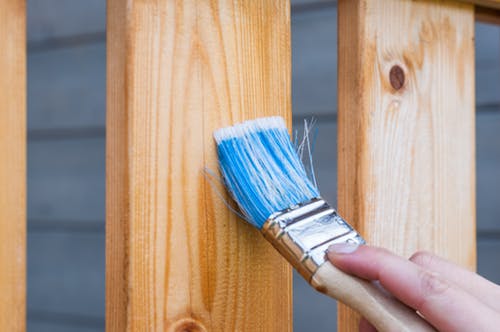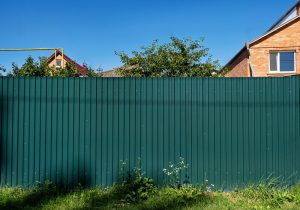What are the Health Risks if I Ignore Fire Damage Restoration?

Ignoring the restoration process after a fire can lead to serious health dangers and structural hazards. Quick action and immediate attention to the problem are essential. In this article, we will discuss the health risks linked to neglected fire damage restoration and why this process is so crucial for your well-being and the integrity of your home.
Understanding Health Risks from Fire Damage
When a fire damages a property, the lingering issues can lead to various health risks if not addressed speedily.
- Respiratory diseases: Residual particles from smoke and soot can enter your respiratory system, potentially resulting in breathing problems. Particulate matter can lodge in the lungs, triggering complications like asthma and other chronic respiratory diseases.
Eye Irritation: Smoke particles can also irritate your eyes, leading to conditions like conjunctivitis (pink eye), corneal ulcers, and uncomfortable dry eyes. These conditions can impact your vision and result in considerable discomfort and inconvenience.
Skin Conditions: Direct contact with soot or residual smoke can cause a range of skin irritations, from simple rashes to allergic reactions. Extensive exposure could lead to chronic dermatitis, an inflammation of the skin that can be intensely irritating and persistent.
Structural Concerns from Ignored Fire Damage
If fire restoration is not acted upon, a range of structural issues can also arise in your home.
- Progressive Damage: The damage caused by a fire can worsen over time if neglected. For instance, residual smoke and soot can etch and erode materials in your home, undermining the structure’s stability.
Declining Property Worth: A home that shows clear signs of fire damage will likely experience a significant decrease in its market value. Prospective buyers might be put off by the extent of necessary repairs and renovation, meaning you could sell your home for significantly less than you initially paid.
Insurance Issues: If fire damage is not addressed and restored adequately, it might complicate your insurance claims. Insurance providers could argue the damage escalated due to neglect, leading them to reduce the payout or refuse the claim outright.
Insights Into Home Damage Restoration
Damage in your home can occur due to various perils, including fire, water, mold, and natural disasters. Home damage restoration is a process that aims to clean, repair, and restore such damaged areas. Notably, property restoration seeks to return a property to its original state, thereby securing a healthy and safe environment for those living in it. The process involves emergency restoration services, mold remediation, engaging damage repair contractors, and accessing disaster recovery services.
Fire and Water Damage Repair
In the wake of a fire, you are likely to experience immediate visible damage as well as hidden issues. For instance, soot and ash, along with smoke damage, can weaken a building’s structure over time if not addressed. Additionally, water used in firefighting efforts often leads to collateral water damage.
If unaddressed, this can result in mold growth, which in turn introduces the need for work from a professional mold restoration company. Such professionals will handle smoke damage cleanup and mold mitigation effectively, ultimately restoring your property to its pre-disaster state.
Property Damage Restoration
Property damage restoration consists of a suite of tasks performed to remedy damage from fire, water, mold, or natural disasters. Undertaking this process in the aftermath of property damage can prevent the problem from exacerbating, mitigating future complications and lessening the overall restoration burden. An essential part of this process is smoke and fire damage repairs, which ensures the property is reinstated to its original condition, preserving its value in the real estate market.
An Overview of Fire Damage Restoration Process
A well-structured fire damage restoration process can secure a home from potential health risks associated with fire and smoke.
- Assessment: The fire damage restoration process typically commences with a thorough assessment of the property damage. This helps the professionals understand the extent of the damage and plan an effective recovery process.
- Stabilization: After assessing the property, professional home restoration teams prioritize stabilizing the affected areas. This crucial step is intended to prevent any further damage to the property by making the site safe for cleanup and restoration purposes.
- Cleanup: This phase involves cleaning up soot and smoke residue from the property. Professionals have specialized equipment and cleaning agents for this task. Removing the soot and smoke is vital to preserve the health of the inhabitants.
Evaluating the Cost of Fire Damage Restoration
The cost of fire damage restoration will understandably vary depending on several factors including, the extent of the damage, the specific method of restoration, and which company is hired for the task. Nevertheless, undertaken residential restoration services are quite effective in alleviating the financial strain of the process. They can significantly support the monetary components of such a task by assisting in insurance claims.
Making the Call: DIY Vs. Professional Restoration
Attempting a DIY restoration after fire damage might seem like a cost-saving option. However, property owners risk missing hidden signs of damage that can develop into serious issues down the line. Entrusting the process to professional services assures a comprehensive handling of the problem. It also secures the future prevention of relapse, thereby sheltering inhabitants from related health hazards. In the long term, employing professional services will likely save you a considerable amount in potential mitigation costs.
Navigating Property Damage Claims
In the aftermath of a fire incident, dealing with insurance providers to initiate property damage claims forms an integral part of the recovery process. Though this process can be complex and tedious, it is pivotal in recovering some of the losses sustained during the incident. Owning a comprehensive policy that covers fires can also be a real lifesaver during such times.
Conclusion
When dealing with fire damage, quick action is crucial. Overlooking the need for fire damage restoration can quickly evolve to become both a health and structural risk. To safeguard your well-being and protect the integrity of your home, professional intervention is necessary. They bring experienced handling to the problem and work towards its future prevention.
So, when faced with fire damage, shelve the thought of riding it out. Instead, think about the long run and opt for immediate, professional solutions that not only mitigate the damage but most importantly, protect your health!


